
- Chiquimula

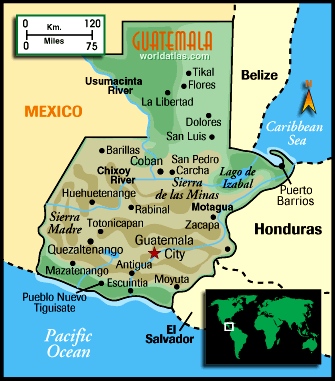
Passing through Guatemala one time (actually heading to El Salvador), I took a break from the road in Guatemala City, where I met a lady (Dorris) from a town called Chiquimula, near the Honduras/El Salvador border, and was invited to stay with her and her family. I accepted the invitation for the experience of learning a little more about the people of the country. I developed a bond with her eldest daughter, Yeny, and tagged around with here for a large part of the time.
I unexpectedly ended up spending 5 weeks there (but I really should expect that sort of thing by now) before heading off to El Salvador, then turned around and came back after 2 weeks to recover from a leg infection, and spent a further 6 weeks (only took one week to recover).
In the time I spent there, I was able to, among other things, explore other nearby villages, find out how painfully slow some of the professors at least at the university here can be, accompany Yeny to a country village for her thesis studies, celebrate their Semana Santa (Easter), and learn a little of an Afro-Brizilian dance/martial art called Capoeira.
Around Chiquimula

Yeny giving her youngest brother Job (pronounced 'Hob') his daily bath.

Outside the front of Yeny´s house, the daily cow round-up through the main pebblestone street.

On a different day I decided to take Yeny's little 70cc motorbike for a ride out in the countryside. Near a little village called 'San José la Arada', I came across a river where there were some women doing the weekly washing. These ladies use smooth, inclined rocks as a base on which to scrub. Behind them was a huge mound of clothes on the rocks. I first thought they were drying in the sun, but I later found out that any white clothes they have, they dampen and rub soap in, then lay them out in the sun to bleach. Then, a while later, they collect and re-wash the clothes to wash out the soap. Then they either lay them out again to dry, or take them home to hang. This whole process takes something like 8 hours, and they do this about once a week. It is an unfortunate consequence that the soap ends up in the river, but they don't really have much choice when there is no water service to the house.
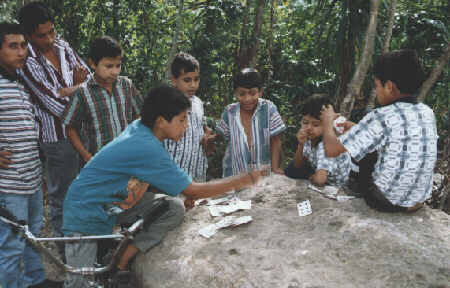
I went out one day with Yeny to the place where she was teaching, about half an hour away from Chiquimula, and took a walk. Along the way I met these kids playing cards. Even though this is a poor village, these kids were playing for money - about half the price of a bottle of Pepsi each hand. On a different occasion I saw childeren playing marbles for money in the schoolyard.
 ...and of course, no card game is without its disputes.
...and of course, no card game is without its disputes.

Not far from where the boys were playing cards was this house. I took this picture to show what the houses here in the country are made of. The bricks are compressed clay, with some type of mud mixture as morter. The window is just an opening in the bricks with a piece of wood below for support. I'm not sure why they don't have support above the window also, as it seems to me more critical. The summers dry the bricks and morter, leaving gaps. The better houses are made the same, but with a layer of plaster on each side. The wall is then able to be painted. If the owner has a bit more money, he can build the house of concrete bricks, but even then they aint no work of art.
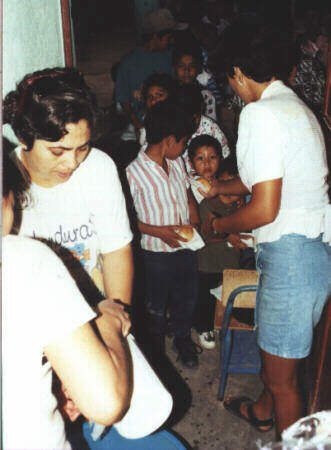
After Yeny and her companions completed the classes at the country community, they had a celebratory picnic in appreciation of their attendance (sometimes it's hard just to get them to come to the free lessons). They each got a bag of 'Horchata' (rice water), and a buttered bread roll to eat, and a gift each. Later the kids got stuck into a piñata filled with lots of lollies.
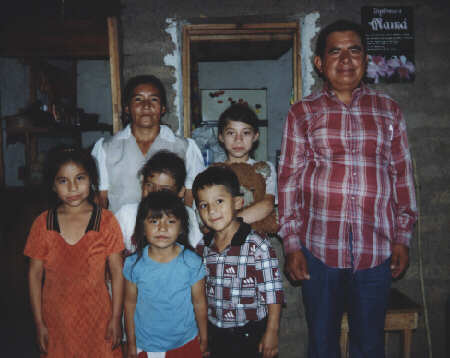
Martin, who helped organize the project with Yeny, wanted his photo taken with his family. Though I'm not sure they're all his kids.
Semana Santa
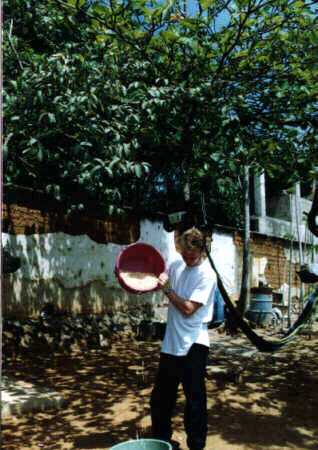
Preparing for Semana Santa. Dorris invited the families of her sisters over for the weekend, so we made a huge batch of Tamales (a ground-corn mixture with meat inside.. tastes better than it sounds). Here I´m pouring the dry corn from one bowl to another to remove the husky bits (they float away in the breeze).

And here is Dorris mixing up the batch of ground corn and water. After heating it forms a dough. It is then scooped into handfuls, a piece of meat or small serve of frijoles (beans) inserted into the middle, wrapped in banana leaf (very important for the taste I´m told), cooked until firm... and eaten ´con mucho gusto´ (with much pleasure). The other pot in front contains the frijoles.
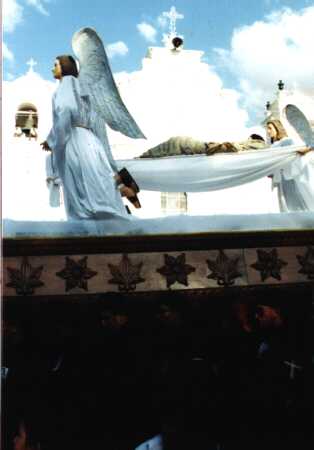
The procession of Semana Santa. Here Jesus is carried on his death bed by angels. The float is carried at an incredibly slow pace. The privilaged carriers rock side-to-side, moving at about half a foot per step, stopping regularly for prayers. The procession starts in the late afternoon, winds through the streats with a small band trailing, playing slow, mornful music, and finally ends up at another church at about 4am for a mass.
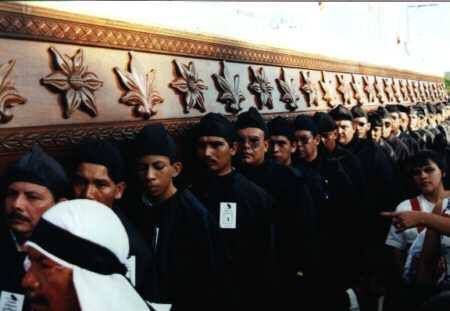
Here are those privilaged float carriers. They change over now and then to allow others to participate. Only men carry the float with Jesus, then behind is another with women carrying the Virgin Mary, and three smaller floats with saints carried by a rabble of childeren.
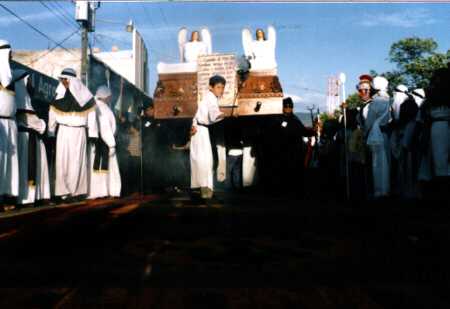
Ahead of the main float, men dressed in white line each side of the street to guide the way, and to clear the path of the many spectators.
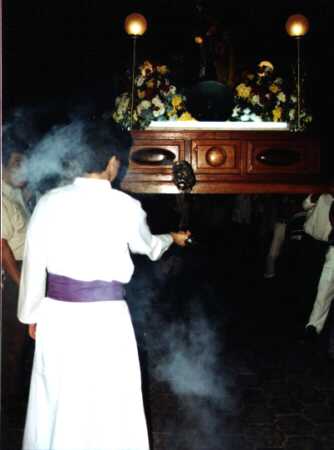
A youngster/teenager is always immediately in front of the float waving smoking insence to purify the air; also seen in the above photo.